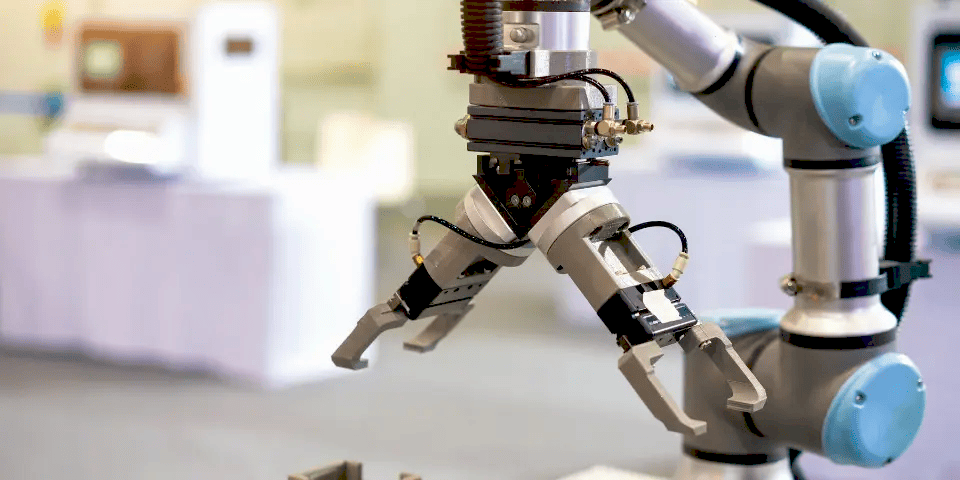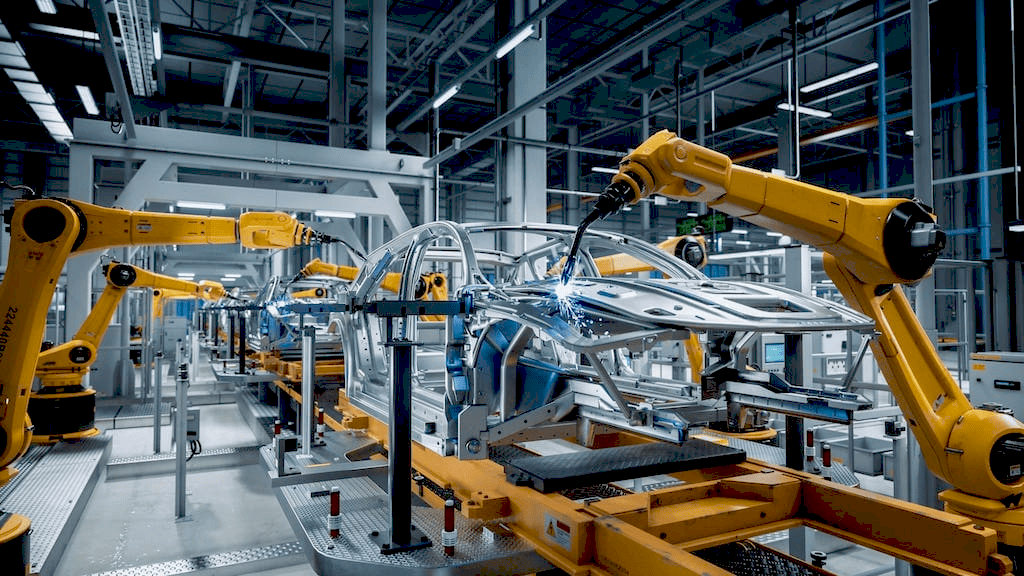Robotic surgery is revolutionizing the healthcare landscape. This advanced surgical technique utilizes robotic systems to enhance precision and control during surgical procedures. The integration of robotic technology in healthcare has led to numerous benefits, making it a vital component of modern medicine.
Robotic surgery offers several advantages over traditional surgical methods:
- Increased Precision: Robotic systems allow surgeons to perform complex procedures with greater accuracy.
- Minimally Invasive: Many robotic surgeries can be performed through small incisions, resulting in less trauma to the patient.
- Reduced Recovery Time: Patients often experience shorter hospital stays and faster recoveries.
- Enhanced Visualization: Robotic systems provide surgeons with high-definition, 3D views of the surgical site.
As robotic surgery continues to evolve, healthcare providers are seeing improvements in patient outcomes. According to recent studies, robotic surgery has led to a decrease in complications and a reduction in post-operative pain.
In conclusion, robotic surgery is transforming healthcare by providing innovative solutions for complex surgical challenges. Its benefits not only enhance surgical precision but also improve patient recovery experiences. The ongoing advancements in robotic technology promise an exciting future for surgical practices.
Current Advancements in Robotic Surgery Technology
Robotic surgery technology is rapidly evolving, significantly enhancing the capabilities of surgical procedures. The advancements in robotic surgery focus on improving precision, efficiency, and patient outcomes. Innovations in robotic surgery systems have introduced features that were unimaginable a decade ago, making surgeries safer and more effective.
Some of the notable advancements include:
- Enhanced Dexterity: Modern robotic surgical systems, such as the da Vinci Surgical System, offer improved dexterity through articulating instruments that mimic human hand movements. This allows surgeons to perform intricate procedures with greater control.
- Improved Imaging: Advances in imaging technology, such as 3D visualization and augmented reality, provide surgeons with enhanced views of the surgical site. This technology allows for better planning and execution of complex surgeries.
- Integration of AI: Artificial intelligence is increasingly integrated into robotic surgery systems, assisting surgeons with decision-making, improving accuracy, and predicting potential complications during surgery.
- Remote Surgery Capabilities: The development of tele-surgery enables surgeons to operate on patients from remote locations, expanding access to surgical care and expertise.
These advancements have led to significant improvements in surgical techniques. For instance, robotic-assisted surgeries have demonstrated reduced blood loss, minimized scarring, and shorter hospital stays. Research indicates that patients undergoing robotic surgeries experience a 20-50% decrease in recovery time compared to traditional methods.
In conclusion, the advancements in robotic surgery technology are transforming the surgical landscape. As technology continues to progress, the potential for even more revolutionary changes in surgical practices is vast. These innovations not only enhance surgical precision but also improve overall patient safety and satisfaction.
Challenges Faced in Robotic Surgery Implementation
Despite the numerous benefits of robotic surgery, there are several challenges in its implementation that healthcare providers must address. These challenges can affect the adoption rate and efficacy of robotic surgical systems.
Key challenges include:
- High Costs: The initial investment for robotic surgical systems can be substantial. This includes the cost of the equipment, maintenance, and training for surgical staff. Many healthcare institutions struggle to justify these expenses, particularly in settings with limited budgets.
- Training and Expertise: Effective use of robotic systems requires specialized training. Surgeons must undergo extensive education to master the technology, and there may be a limited number of qualified instructors available.
- Technical Limitations: While robotic systems are highly advanced, they are not without limitations. Issues such as equipment malfunctions or software glitches can pose risks during surgeries, necessitating backup plans and protocols.
- Patient Selection: Not all patients are suitable candidates for robotic surgery. Surgeons must carefully evaluate each case, which can limit the number of procedures performed with robotic assistance.
Addressing these challenges requires a collaborative approach among healthcare providers, manufacturers, and regulatory bodies. By developing training programs, improving cost-effectiveness, and ensuring robust technical support, the healthcare industry can enhance the adoption of robotic surgery technologies.
In summary, while robotic surgery presents several challenges in its implementation, the potential benefits for patients and healthcare systems make it a worthwhile pursuit. Overcoming these hurdles will ensure that robotic surgery continues to advance and improve surgical outcomes.
Future Trends and Innovations in Robotic Surgery
Robotic surgery is poised for significant growth and innovation in the coming years. As technology advances, the integration of robotic systems into surgical practices will enhance both capabilities and outcomes. Key trends shaping the future of robotic surgery include:
- AI Integration: The use of artificial intelligence in robotic surgery is expected to expand, enabling systems to learn from previous surgeries. This will improve precision and outcomes while reducing the risk of complications.
- Telemedicine and Remote Surgery: As telecommunication technology evolves, remote robotic surgery will become more viable, allowing surgeons to operate on patients across great distances. This could significantly increase access to specialized surgical care.
- Miniaturization of Instruments: Innovations in miniaturized robotic instruments will allow for even less invasive procedures. Smaller tools can reduce recovery time and minimize scarring, improving patient satisfaction.
- Enhanced Training Programs: As robotic surgery becomes more prevalent, there will be a greater emphasis on developing comprehensive training programs for surgeons. This will ensure that medical professionals are well-prepared to use advanced robotic systems effectively.
These trends indicate a promising future for robotic surgery. The continual development of technology will likely lead to improved surgical outcomes, increased efficiency, and broader accessibility for patients. As the healthcare industry embraces these innovations, robotic surgery will play an increasingly vital role in modern medical practices.
Case Studies of Successful Robotic Surgeries
Several case studies highlight the effectiveness and advantages of robotic surgery. These examples demonstrate how robotic systems enhance surgical procedures and improve patient outcomes.
1. Prostatectomy: A well-documented case involved a patient undergoing robotic-assisted prostatectomy. The procedure resulted in minimal blood loss, a shorter hospital stay, and faster recovery compared to traditional open surgery. The patient reported a high satisfaction level due to the reduced pain and quicker return to normal activities.
2. Cardiac Surgery: Another notable example is robotic-assisted mitral valve repair. Surgeons successfully performed the procedure through small incisions, leading to less trauma and quicker recovery. Patients experienced fewer complications, and the success rate was comparable to traditional methods.
3. Gynecological Surgery: A study on robotic hysterectomy showed that patients experienced less postoperative pain and shorter recovery times. The robotic system allowed for greater precision in tissue handling, which contributed to the overall success of the surgery.
These case studies underscore the advantages of robotic surgery, including improved precision, reduced recovery times, and enhanced patient satisfaction. As more data becomes available, the medical community will continue to recognize the value of robotic systems in surgical practices.
Conclusion and Implications for the Healthcare Industry
Robotic surgery represents a transformative shift in healthcare, providing numerous benefits over traditional surgical methods. With advancements in technology, the future of robotic surgery looks bright, promising enhanced precision, efficiency, and patient outcomes. The integration of AI and telemedicine will further expand the capabilities of robotic systems, allowing for innovative approaches to surgical care.
Healthcare providers must continue to invest in training and education to ensure that surgeons are equipped to utilize these advanced technologies effectively. As the field of robotic surgery evolves, it will become an integral part of surgical practices worldwide, ultimately improving the quality of care for patients.
In summary, the implications of robotic surgery extend far beyond the operating room. As technology advances, the potential for better surgical outcomes and improved patient experiences will redefine the landscape of modern healthcare.




